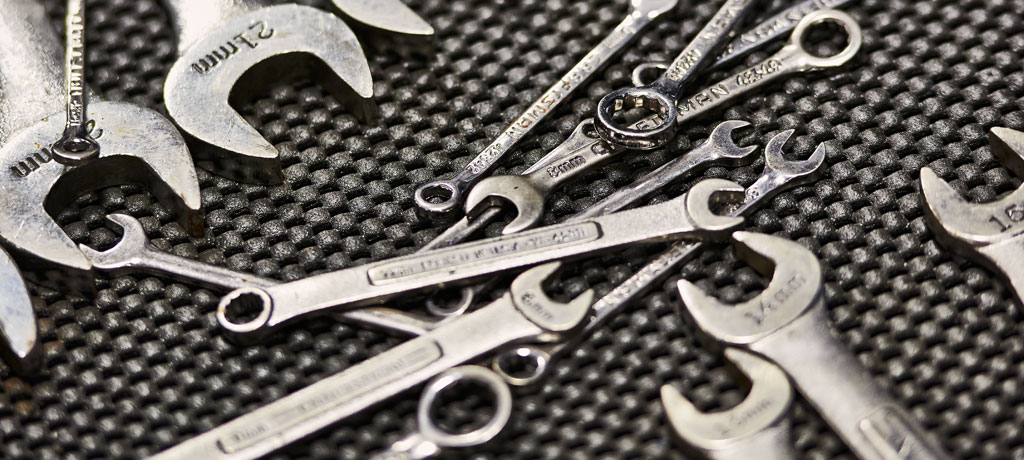Dual Exhausts – Are They Just for Looks?

What goes in must go out. This means that your engine, which is like a huge vacuum pump, sucks in air and fuel. An engine like the one in your car has four stroke: Intake, compression, combustion and exhaust. Once the air and fuel are pulled into the engine (intake), the piston comes up to compress the mixture to make it more volatile (compression). The spark plug fires and causes an explosion in the cylinder (combustion). However, not all of the fuel and air is used. This leftover mixture must make its way out of the engine to make room for a new wave to start. This is the exhaust stroke – the leftover gas and air are forced out of the cylinder through the exhaust valves, into the exhaust manifold and out through the exhaust system.
Upgrade Exhaust System – Find a Meineke Shop Near You
Single and Dual Exhausts
Your vehicle may have a single or dual exhaust system. In a single exhaust system, your vehicle has one or two exhaust manifold depending on the size of the engine. If you have a four-cylinder, your vehicle will have one exhaust manifold. If you have a V-6 or larger engine, your vehicle will have two exhaust manifolds – one for each head or “bank.” A vehicle with two manifolds and two exhaust tips may still have a single exhaust. After the manifold, the pipes lead to the catalytic converter and muffler. If your vehicle has a single exhaust, the pipe coming out of each manifold is jointed in a Y before the catalytic converter and muffler. A single exhaust has one of each while a dual exhaust has two of each. A dual exhaust may also have an H pipe before the converters to help control back pressure and increase horsepower. This is a crossover between the two exhaust pipes, and it forms an H with the exhaust pipes.
Dual Exhaust vs Single Exhaust Systems
The main reason for having a dual exhaust system is to get the leftover air out of the cylinders faster so that the next exchange can start quicker. Since the speed at which the exhaust is forced out of the engine is limited by the size of the camshaft and the timing, you want to get more “used” air – exhaust – out at one time. The more you get out, the more the engine can suck in; thus, you have more horsepower. However, if you have a non-turbocharged four-cylinder, adding a dual exhaust is not going to make a big difference. In this case, it would just be for looks. If you have a turbocharged four cylinder, dual exhaust will make a significant difference because of the amount of air and fuel forced into the engine by the turbo. If you have a V-6 or larger, you will also notice a significant increase in horsepower.
What Does Dual Exhaust Do?
If each bank has its own exhaust system, there is more space for more exhaust to exit the engine. For example, if your vehicle has eight cylinders and a single exhaust, all the used air is trying to get out one pipe, one catalytic converter and one muffler. This can cause back pressure – like a bottleneck traffic jam – thus robbing your vehicle of horsepower. Adding a second exhaust system so that each head and exhaust manifold has its own system allows double the exhaust to be forced out of the engine, thus increasing horsepower. Dual exhaust also decreases some of the back pressure that is common with single exhaust systems. Another back pressure builder is the stock exhaust manifolds. Because of the way they are designed, they tend to increase back pressure. When you convert to dual exhaust, be sure to replace the manifolds with headers. Don’t go with a cheap set, either. Choose headers that are stainless steel to reduce rust. Also, if possible, choose headers that are made so the pipe lengths are as close to the same length as possible. This further reduces back pressure and increases horsepower.
It’s Not Just For Looks
If you have dual exhaust tips to a single exhaust, your vehicle will look great, but it’s not doing anything to increase power. Dual exhaust will give you a significant power increase because of the engine’s ability to breathe better. Thus, if you are trying to increase horsepower, dual exhaust may be worth the cost. You’ll have to replace the intake manifolds with headers, then add the proper piping, converters and mufflers.
Cost Savings
Because a dual exhaust makes a vehicle more efficient, you could realize a savings on the cost of gas. How much depends on the vehicle itself, and what other things you do to the vehicle to increase horsepower. You can add a programmable chip to the computer or any other engine modifications. With a larger, more efficient exhaust system, you can increase the amount of air and fuel sucked into the engine, however, doing this may negate the savings you realize from the dual exhaust. Stop by your local Meineke Car Care Center to discuss options for dual exhaust including pipe size, header tube size and the type of headers and mufflers that will best benefit your vehicle. Certain types of mufflers, with the proper setup, will not only increase horsepower and save fuel, but look great and will make your vehicle sound great.





